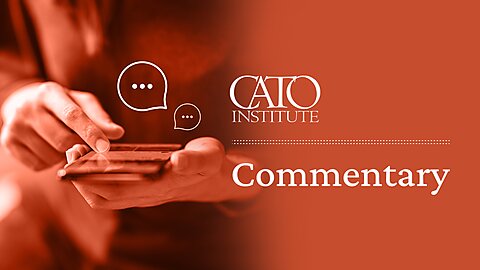Much has been made about the post–affirmative action dip in college acceptance rates among black students, especially at elite institutions like the Massachusetts Institute of Technology (MIT), where black student acceptance dropped from 15 percent of last year’s class to only 5 percent of this year’s entrants. The hullabaloo is understandable; this drop confirms the worst fears of those who bristled the most at the Supreme Court’s overturning of racial quotas.
That said, there has been a nagging question since the acceptance rates were published, and one that does not seem to be getting any media attention whatsoever: Why aren’t we paying attention to the black students who did get into elite colleges without the assistance of affirmative action? Why aren’t we asking who these students are or what they did to get accepted? Why aren’t they seen as models for other students to emulate?
This tendency to ignore the positive in black student education is nothing new. In Agency, a book outlining ways to empower students toward academic success, Ian Rowe recounts the San Diego Unified School District’s discovery that 20 percent of its black students received a D or worse in their first semester. They expressed a determination to eliminate the obstacles blocking students of color from academic success. But, as Rowe points out, no one thought to ask the 80 percent of successful black students what they did to succeed.
“Were there particular teachers whose students demonstrated gains?,” Rowe wrote. “Did the passing students study more? Did they submit homework on time? Did they take advantage of tutoring hours? Were their parents more engaged? The answer might help teachers and students across the district.”
This, says Rowe, is the problem with so-called anti-racism in education. I have noticed that anti-racist educators, whether in K–12 education or higher education, see the world through a lens already calibrated to emphasize the negative. The rhetorician Kenneth Burke identified a tendency for people to train themselves to select certain themes while deflecting others.
Taking MIT as an example, many choose to select the 10 percent drop in black student acceptance and deflect the 5 percent of successful students. This tendency to select—in a sense, prefer—the negative is identified by behavioral scientists as “negative emotionality.”
In an essay outlining the problems with the concept of microaggressions, psychologist Scott Lilienfeld defines negative emotionality (NE) as “a pervasive temperamental disposition to experience aversive emotions of many kinds, including anxiety, worry, moodiness, guilt, shame, hostility, irritability, and perceived victimization.” Citing studies spanning 25 years, Lilienfeld wrote that “individuals with elevated levels of NE tend to be critical and judgmental of both themselves and others, vulnerable to distress and emotional maladjustment, and inclined to focus on the negative aspects of life.” These individuals “also tend to be vigilant and overreactive to potential stressors” and are “prone to interpreting ambiguous stimuli in a negative light.”
It would seem that those anti-racist educators Rowe identifies share a discourse in which, when it comes to race, only the negative matters. Only the information that solidifies a victim status among blacks is taken seriously. Anything else is invisible.
Let us put a spotlight on the black students who are accepted: the 14 percent accepted at Harvard University, the 9 percent accepted at Brown University, and even the 3 percent accepted at Amherst College. Perhaps we will discover consistencies in study time, familial trends, socioeconomics, or extracurriculars. We won’t really know until we look into it and make our findings known to the public, especially high school students and their parents.
Another positive of this admissions drop in elite colleges is that institutional “mismatch” is less likely. Perhaps the most obvious positive aspect of this development is the very thing deemed negative about it! Because affirmative action is no longer a factor, students who do not have the relevant merit for particular institutions were not accepted. The percentage of students who were not accepted at these institutions may now consider and attend schools that are a better fit for their levels of college preparedness. Theoretically, this would heighten the rate of success for those students, increasing the mere 34 percent of black Americans with an associate’s degree or higher.
John McWhorter discusses this concept of institutional mismatch in his book, Woke Racism: “The discussion of affirmative action implies that the choice [of college or university] is somehow between Yale or jail, as if the few dozen highly selective universities were the only ticket to lifetime success.” However, he saw in the aftermath of California’s affirmative action ban that “students who once would have been ‘mismatched’ to Berkeley or UCLA were being admitted to schools like UC San Diego” where “one in five black freshmen at the latter school were making honors, the same proportion as white ones.” One in five is a significant improvement on the University of California, San Diego’s one black honor student out of 3,268 just a year before the ban.
We have to notice and emphasize the upside to affirmative action’s ban and the resulting drop in black student admission to elite colleges. If nothing else, maybe we should let those accepted black students know they are acknowledged and applauded and let everyone know that schools like MIT and Harvard are not the only options available. Let us build upon the positive.

